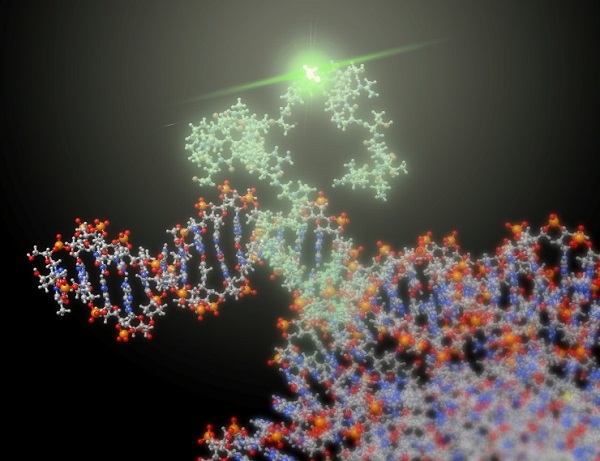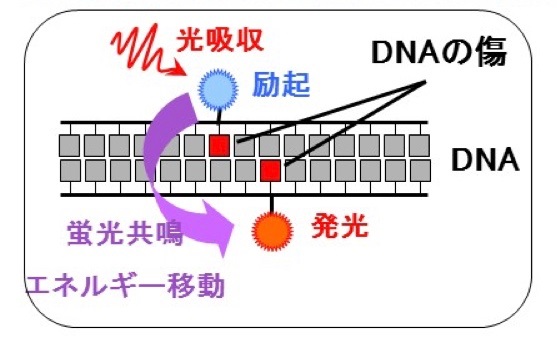Department of Quantum Life Science
The Quantum Life Science Laboratory uses quantum beams and computer simulation to advance fundamental research contributing to the development of life science and application research useful for society such as medical care.
In the study utilizing quantum beams, in order to clarify the mechanism by which radiation affects living organisms, development of detection method of difficult-repairing DNA damage and analysis of the influence on the organism by DNA damage are performed, We are aiming not only for contributing to society but also for contributing to sophistication of radiotherapy treatment and higher accuracy of low dose risk.
In computer simulation, we are advancing researches on the movement of DNA in the cell nucleus and mechanisms of gene expression control, and aim to clarify the basic principle of life.
On the other hand, we are also developing a palm-sized non-invasive blood glucose sensor by combining an advanced solid-state laser and optical parametric oscillation technology as an application study of laser. This sensor does not need to pierce the needle and does not require blood sampling, it can measure blood glucose only by touching with a finger, so it is expected to contribute greatly to medical care.
DNA Research
By making full use of computer simulation and experiments, we are conducting research that is closing in on the movement of DNA in the cell nucleus and the gene expression control mechanism. In addition, to reveal the mechanisms by which radiation affects organisms, we are developing a detection method of the repairability of DNA damage and the analysis of the impact on the organisms from DNA damage. Our body is also made up of 60 trillion cells, these cells have been replaced on a regular basis (3-4 months) by metabolism.

Structural analysis of biological macromolecules by computer simulation

Attaching a fluorescent molecule to the DNA damage, measurement of the fluorescence resonance energy transition is observed only in the case of a close proximity of a distance of nanometers. Observation of how DNA can be damaged in detail.
